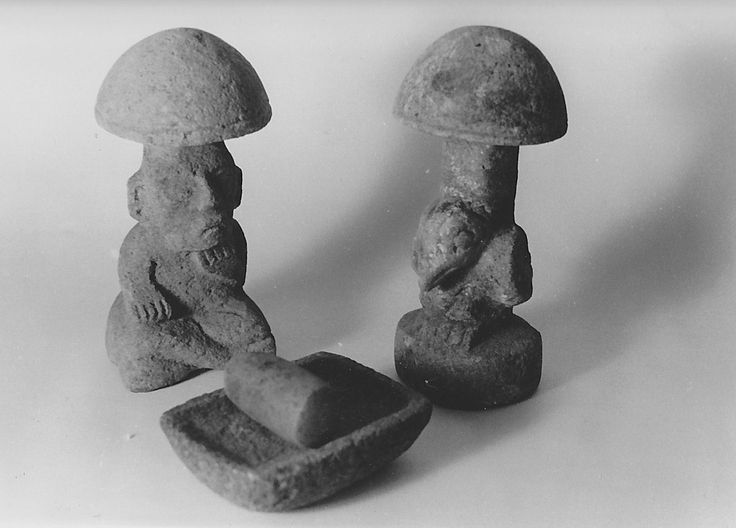Magic mushrooms have a long and fascinating history of use in human cultures around the world. Here are some key points in their history:
- Earliest evidence: The use of psychoactive mushrooms is believed to date back thousands of years, with the earliest evidence found in rock art in the Sahara desert dating back 7,000 to 9,000 years ago.
- Indigenous cultures: Many indigenous cultures, including those in Mesoamerica and South America, have used psychoactive mushrooms in their spiritual and medicinal practices for centuries.
- Western discovery: The first recorded use of magic mushrooms by Westerners occurred in the 16th century when Spanish conquistadors encountered indigenous peoples using them in religious ceremonies in Mexico.
- Scientific study: In the 20th century, researchers began to study the effects of psilocybin, the active ingredient in magic mushrooms, on the brain and behavior, leading to a surge of interest in their therapeutic potential.
- Legal status: The legal status of magic mushrooms varies around the world, with some countries allowing for medical or religious use, while others have criminalized their possession and use.
How have indegenous cultures used magic mushrooms?
Indigenous cultures around the world have used magic mushrooms for centuries in their religious and healing practices. In many of these cultures, the mushrooms are considered sacred and are used to connect with the divine or spiritual world.
For example, in Mexico, the Mazatec people have used magic mushrooms, which they call “teonanácatl,” in their religious ceremonies for centuries. They believe that the mushrooms allow them to communicate with their ancestors and the divine.
Similarly, the use of magic mushrooms in the Amazon rainforest by indigenous tribes has been documented for centuries. The shamans or healers of these tribes use the mushrooms to enter into altered states of consciousness and to communicate with the spirits.
In many indigenous cultures, the use of magic mushrooms is seen as a way to heal both physical and mental ailments. The mushrooms are believed to have powerful healing properties that can help to treat a range of conditions, from headaches to depression and anxiety.
Overall, the use of magic mushrooms has played an important role in the spiritual and healing practices of many indigenous cultures throughout history.
You can learn more about the history here:
https://en.wikipedia.org/wiki/Psilocybin_mushroom
Who brought magic mushrooms to the West?
The use of magic mushrooms in the West became more widely known in the mid-20th century, largely as a result of the work of several individuals, including ethnomycologist R. Gordon Wasson, who published an article in Life magazine in 1957 about his experiences with mushrooms in Mexico. Wasson’s work helped to popularize the use of magic mushrooms in Western cultures and spurred further research into their effects and potential applications.
Other individuals who played a role in introducing magic mushrooms to the West include mycologist Paul Stamets, who has conducted extensive research on the use of psilocybin-containing mushrooms for various purposes, and author and psychonaut Terence McKenna, who was an influential advocate for the use of psychedelics in general and wrote extensively about his experiences with magic mushrooms.
What have scientific studies shown about the potential of psilocybin?
There have been numerous scientific studies done on psilocybin, the psychoactive compound found in magic mushrooms. Some of the key findings from these studies include:
1. Psilocybin has been shown to have therapeutic potential for the treatment of depression, anxiety, and addiction.
2. Psilocybin can induce mystical experiences, which are associated with positive changes in attitudes, behaviors, and mood.
3. Psilocybin can increase empathy and social connectedness.
4. Psilocybin can cause long-lasting changes in personality traits, particularly in openness to experience.
5. Psilocybin can increase creativity and problem-solving ability.
6. Psilocybin can enhance the experience of music and visual stimuli.
7. Psilocybin can produce a sense of spiritual or mystical significance.
These studies have been conducted using various methods, including clinical trials, brain imaging studies, and surveys of people who have used psilocybin. While more research is needed to fully understand the effects and potential therapeutic uses of psilocybin, these studies suggest that it may have significant benefits for mental health and well-being.
What is the legal status of magic mushrooms?
The legal status of magic mushrooms varies depending on the country and region. In some countries, such as the Netherlands and Jamaica, magic mushrooms are legal or decriminalized. In other countries, including the United States, magic mushrooms are classified as a Schedule I controlled substance, meaning they are illegal to possess, use, or distribute. However, some cities and states within the US have recently decriminalized magic mushrooms or reduced penalties for their possession and use. It is important to research the specific laws and regulations in your region before using or possessing magic mushrooms.
You can read more about this topic in our article “Are spore syringes legal”.
In conclusion
Overall, the history of magic mushrooms is one of both spiritual and scientific exploration, with a growing understanding of their potential benefits and risks.
Psychedelic educators also have the following article which gives some more insights into the subject:
